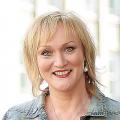
THE story of Women for Independence really begins, not with the formal launch of the movement, but with the Scottish Parliament election of May 5, 2011. On that day, the rules of devolution were torn to shreds.
The UK Labour government had set up a convoluted voting system which was designed to ensure that no single party could ever gain an overall majority. It was deliberately engineered to prevent Scotland moving towards independence. And then it all came apart when the SNP stormed to victory and Holyrood ended up with a 15-seat pro-independence majority.
But we still had a mountain to climb before our long-term vision could be turned into reality. A quarter of a million people had abandoned Labour across Scotland. And the Liberal Democrats had collapsed. Much as we would like to have pretended otherwise, this was a rebellion against the old order rather than a vote in favour of independence...
By that time, I had drifted away from formal political activity, tired and disillusioned after years of being involved in trade union and left-wing politics which I had increasingly found oppressive and stultifying. My enthusiasm, idealism and dynamism had been pretty much kicked out of me and it would have taken a lot for me to get involved in anything. The prospect of a referendum, however, changed everything.
I had always been a strong supporter of Scottish independence and had been part of that small minority which voted SNP through the 1980s when it had seemed like a lost cause. So, after 2011, I became re-energised. Yet the way the debate was being conducted still left me cold. What I saw was middle-aged men in suits and ties scoring points against one another over issues such as currency and the European Union. Not that these were unimportant, but for me the cause of independence had always been much bigger. It was about the democratic transformation of Scotland...
I was especially concerned about the marginalisation of women. At that time, even as late as 2011 and 2012, all-male panels on TV debates were not only acceptable, they were normal. Whenever I or other women criticised these arrangements, we would often be on the receiving end of a torrent of abuse.
In private conversations with close friends around that time, the idea of some kind of women-only pro-independence movement began to emerge. It had become something of a truism that far fewer women supported independence, and various theories were constructed to explain this. Women were innately more cautious. They were more risk-averse. They were less tribal.
I was never convinced by these sweeping generalisations. I felt that a much bigger factor than any of these was the technical nature of the debate, with its relentless focus on facts and figures rather than values. Many women in my circle of friends were more concerned about issues that were in their faces on a day-to-day basis such as health, poverty, nuclear weapons and treatment of refugees than GERS figures or North Sea oil prices...
Our first meeting in the Pearce Institute in Govan was by invite only, to a cross-section of women from different backgrounds who were committed to building an open, pluralistic, organisation that would have a welcoming atmosphere. We knew that if this turned into a political battleground it would be dead in the water. And even though most of the founders would loosely have defined themselves as “feminist”, we avoided using the term so that it would not become any kind of barrier.
In practice, we advanced feminist ideas without enshrining the word in the aims of the movement. It’s like the old saying, “people call me a feminist because I refuse to be a doormat”. My mum acted out feminism in her day-to-day life by standing up for her rights and challenging badly behaved men without ever using the label.
The Govan meeting in March 2012 was attended by about 20 to 25 women who made plans to deal with the practicalities of founding a new movement, which then formally adopted the name Women for Independence, Independence for Women. We set up a few working groups to develop a website, a social presence and materials to help women organise themselves on the ground. And we started building for a public launch ...
This piece was an extract from our special magazine to celebrate the indyref. To read it in full, pre-order your limited edition today at: www.thenational.scot/shop



Why are you making commenting on The National only available to subscribers?
We know there are thousands of National readers who want to debate, argue and go back and forth in the comments section of our stories. We’ve got the most informed readers in Scotland, asking each other the big questions about the future of our country.
Unfortunately, though, these important debates are being spoiled by a vocal minority of trolls who aren’t really interested in the issues, try to derail the conversations, register under fake names, and post vile abuse.
So that’s why we’ve decided to make the ability to comment only available to our paying subscribers. That way, all the trolls who post abuse on our website will have to pay if they want to join the debate – and risk a permanent ban from the account that they subscribe with.
The conversation will go back to what it should be about – people who care passionately about the issues, but disagree constructively on what we should do about them. Let’s get that debate started!
Callum Baird, Editor of The National
Comments: Our rules
We want our comments to be a lively and valuable part of our community - a place where readers can debate and engage with the most important local issues. The ability to comment on our stories is a privilege, not a right, however, and that privilege may be withdrawn if it is abused or misused.
Please report any comments that break our rules.
Read the rules hereLast Updated:
Report this comment Cancel